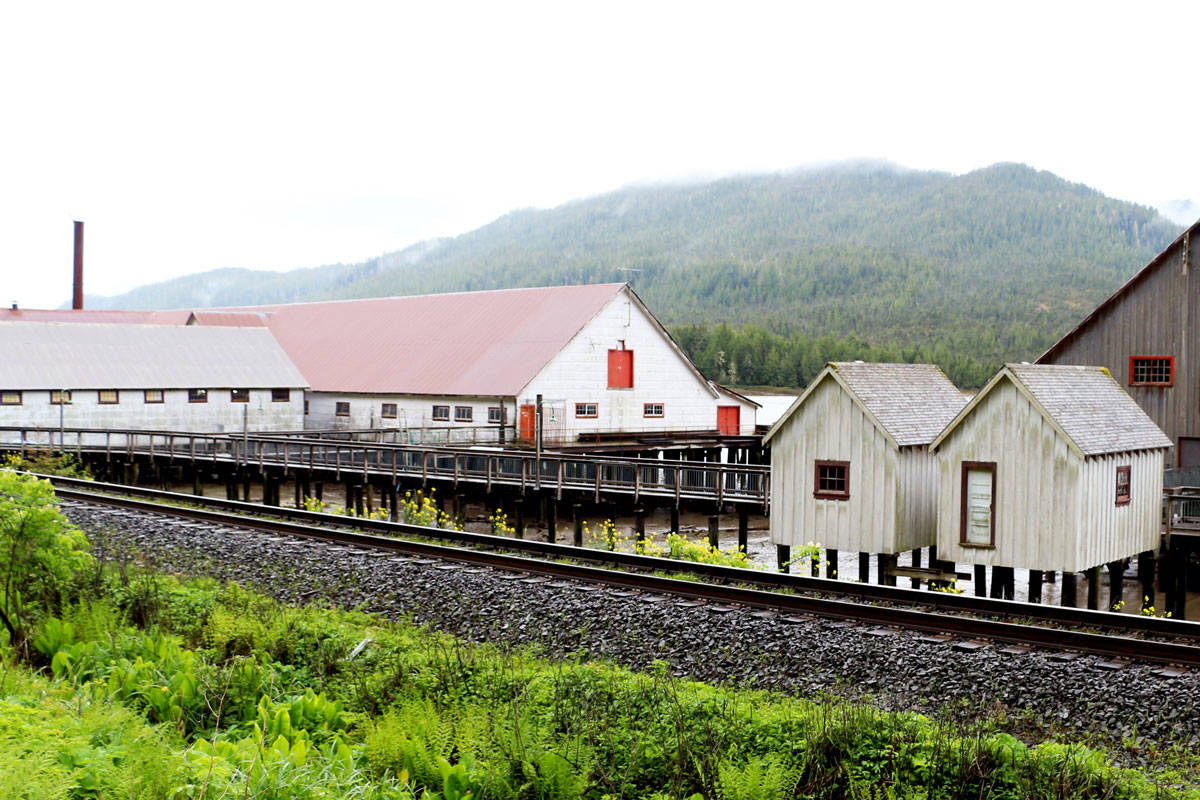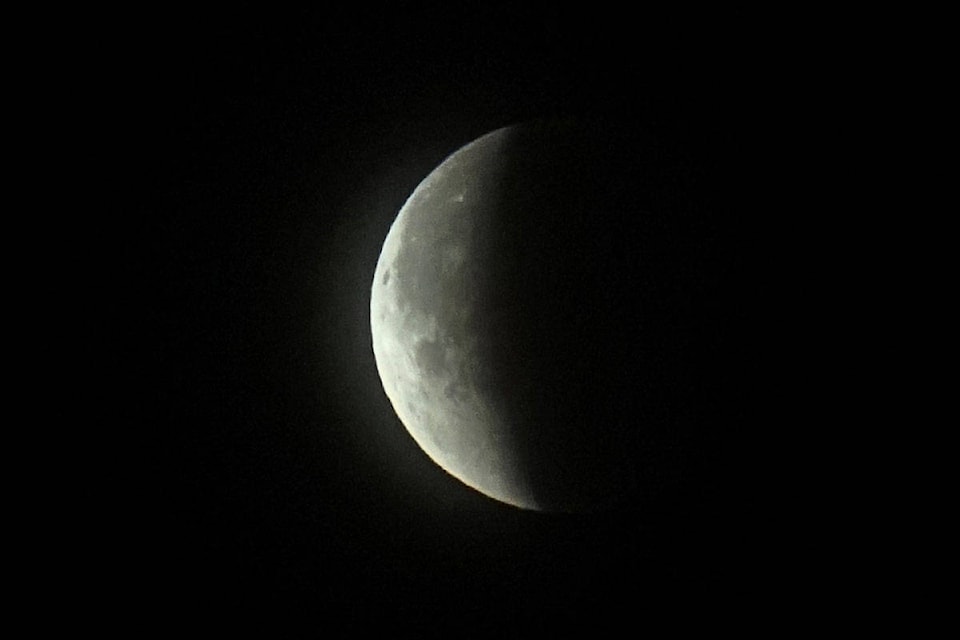The super blue blood moon is making waves on the North Coast.
The natural phenomenon is a combination of a blue moon — when a full moon occurs twice in the same month — a blood moon and a supermoon.
PHOTOS: Super blue blood moon on the North Coast
“When the moon passes into the earth’s shadow this can result in the moon turning red, hence the name blood moon. A supermoon appears larger because it’s six per cent closer to the earth and 14 per cent brighter,” said Karina Dracott, the Vancouver Aquarium’s coordinator for the North Coast Cetacean Research Initiative.
While overcast skies prevented people seeing the lunar spectacle in Prince Rupert on Wednesday morning, they’ll be able to see the change in the tides.
“Super moons and the spring tides are always an interesting time because, in terms of oceanography, you have the highest and strongest tidal forces. Basically, the ocean is at the maximum tide time,” Dracott said.
“We’re going to get higher high tides and lower low tides. You might see some of the stronger currents ripping through these small islands and passages.”
READ MORE: Super blue blood moon coming to skies near you
The high tide of 7.37 metres rose at 1:10 p.m. on Jan. 31, with the lowest low tide reaching .02 metres at 7:43 p.m. that night.
Those numbers come close to the highest and lowest ever recorded in Prince Rupert, which was 7.5 and -0.1 metres.
Dracott said Rupertites can expect to see large tidal swings through Friday.
Intertidal habitat
“This will be really awesome for anyone out there during low tide to take a walk along the intertidal zone, because they’ll see more than they would normally ever see,” Travis Gerwing said.
Gerwing, who is an adjunct professor at the University of Northern British Columbia, researched the intertidal habitats around Rupert and the Cassiar Cannery mudflats. He studied the resilient organisms who have adapted to extreme and variable conditions, where they are exposed to the air twice a day and then completely submerged.
“There’s all kinds of little critters out there. We have anthropods, we have worms, crabs and quite a few different species of fish that cruise around through that area as well,” Gerwing said.
The tidal changes from the super blue blood moon mean the conditions the intertidal creatures live in will be, temporarily, more extreme.
“More of the intertidal flats are going to be exposed, and then during the high tide we’re going to have areas that normally aren’t underwater, they’re going to be underwater. That’s going to cause some stress for those animals living at the edges,” Gerwing said. “Those sub-tidal organisms living just below the intertidal margin, they’re usually not exposed. Some of them could be stressed out during the low low tide and during the high high tide some of the plant species along the upper margin there, they can get inundated with salt water. It’s not super healthy for them, but it doesn’t happen very long and it doesn’t happen very often.”
During high tide, the general manager of the North Pacific Cannery, Laurie Davie, said they’ve noticed the waterline is much closer to the bottom of their buildings. Both Dracott and Gerwing recommended visiting the areas near the Cassiar Cannery and the North Pacific Cannery to view the tidal changes.
Gerwing recommends those exploring the mudflats during low tides be aware that the tide will return quickly.
READ MORE: Worms, an ecosystem warning system
keili.bartlett@thenorthernview.com
Like us on Facebook and follow us on Twitter

